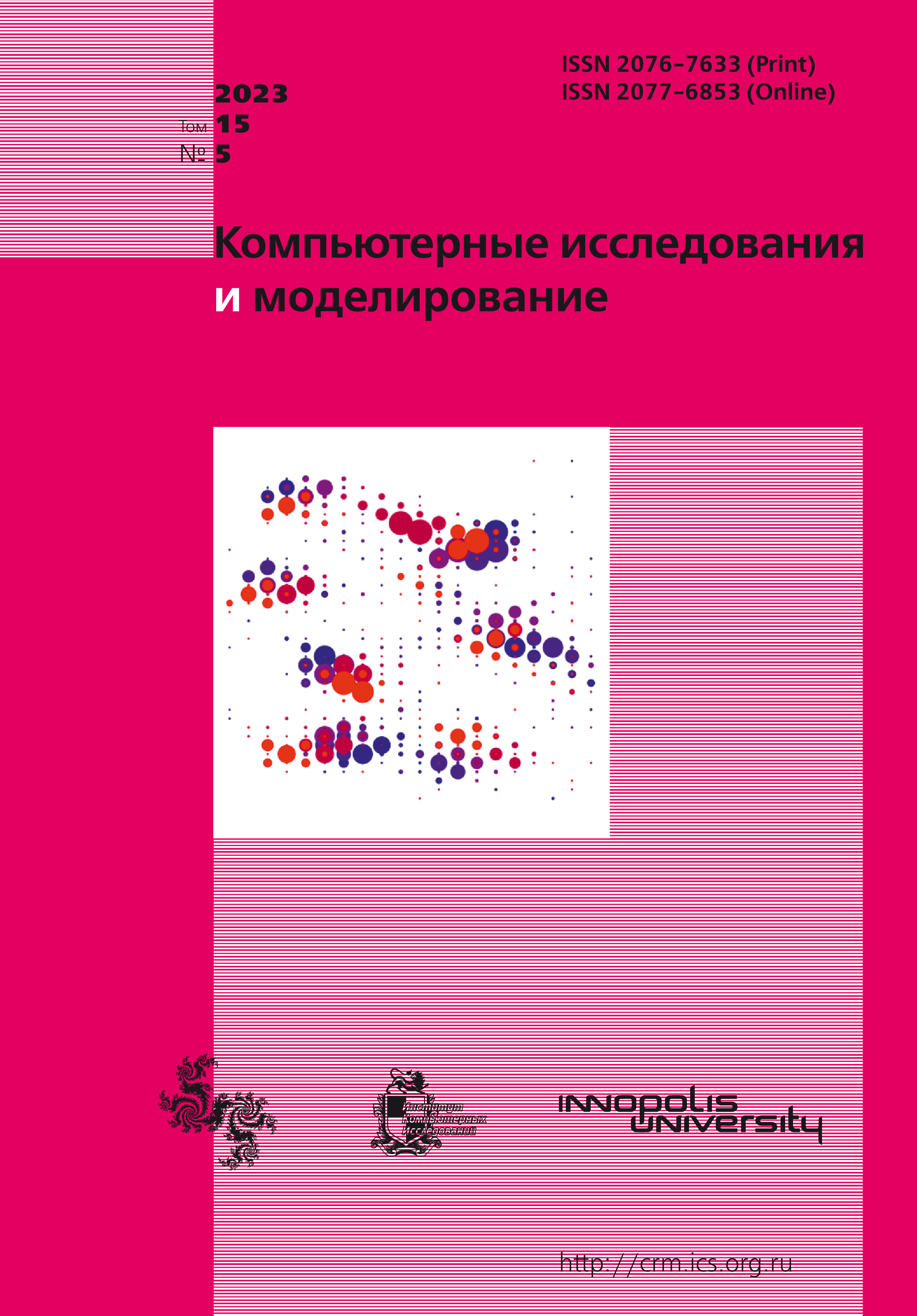All issues
- 2025 Vol. 17
- 2024 Vol. 16
- 2023 Vol. 15
- 2022 Vol. 14
- 2021 Vol. 13
- 2020 Vol. 12
- 2019 Vol. 11
- 2018 Vol. 10
- 2017 Vol. 9
- 2016 Vol. 8
- 2015 Vol. 7
- 2014 Vol. 6
- 2013 Vol. 5
- 2012 Vol. 4
- 2011 Vol. 3
- 2010 Vol. 2
- 2009 Vol. 1
Two-dimensional modeling of influence on detached supersonic gas flow caused by its turning by means of rapid local heating
 pdf (594K)
pdf (594K)
The influence of the process of initiating a rapid local heat release near surface streamlined by supersonic gas (air) flow on the separation region that occurs during a fast turn of the flow was investigated. This surface consists of two planes that form obtuse angle when crossing, so that when flowing around the formed surface, the supersonic gas flow turns by a positive angle, which forms an oblique shock wave that interacts with the boundary layer and causes flow separation. Rapid local heating of the gas above the streamlined surface simulates long spark discharge of submicrosecond duration that crosses the flow. The gas heated in the discharge zone interacts with the separation region. The flow can be considered two-dimensional, so the numerical simulation is carried out in a two-dimensional formulation. Numerical simulation was carried out for laminar regime of flow using the sonicFoam solver of the OpenFOAM software package.
The paper describes a method for constructing a two-dimensional computational grid using hexagonal cells. A study of grid convergence has been carried out. A technique is given for setting the initial profiles of the flow parameters at the entrance to the computational domain, which makes it possible to reduce the computation time by reducing the number of computational cells. A method for non-stationary simulation of the process of rapid local heating of a gas is described, which consists in superimposing additional fields of increased pressure and temperature values calculated from the amount of energy deposited in oncoming supersonic gas flow on the corresponding fields of values obtained in the stationary case. The parameters of the energy input into the flow corresponding to the parameters of the electric discharge process, as well as the parameters of the oncoming flow, are close to the experimental values.
During analyzing numerical simulation data it was found that the initiation of rapid local heating leads to the appearance of a gas-dynamic perturbation (a quasi-cylindrical shock wave and an unsteady swirling flow), which, when interacting with the separation region, leads to a displacement of the separation point downstream. The paper considers the question of the influence of the energy spent on local heating of the gas, and of the position on the streamlined surface of the place of heating relative to the separation point, on the value of its maximum displacement.
Copyright © 2023 Saveliev A.S.
Indexed in Scopus
Full-text version of the journal is also available on the web site of the scientific electronic library eLIBRARY.RU
The journal is included in the Russian Science Citation Index
The journal is included in the RSCI
International Interdisciplinary Conference "Mathematics. Computing. Education"






